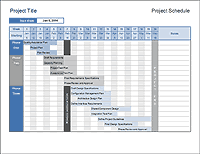Non-Disclosure Agreement Template
If you want to discuss a potential partnership, license agreement or other business arrangement with someone, you should have the person sign a Non-Disclosure Agreement (NDA) prior to disclosing your confidential information. This type of contract is also known as a confidentiality agreement. The point is to protect ideas, proprietary information or trade secrets from being accessible to competitors or the public. When ideas or confidential information may flow both ways between the two parties, meaning that each party has information they want to protect, you should sign a mutual NDA (aka "two-way" or "bilateral" NDA).
Unilateral Non-Disclosure Agreement / Confidentiality Agreement
for Microsoft WordDownload
⤓ Word (.docx)Description
This template is designed for a situation in which one party will disclose confidential information to another party. This type of agreement is sometimes referred to as a one-way or unilateral non-disclosure agreement.
IMPORTANT DISCLAIMER: TotalSheets.com is not a law firm and does not provide legal advice or legal representation. The non-disclosure agreement template, instructions and related information ("Legal Information") provided herein may not be appropriate for your specific situation, may not be suitable for use in some jurisdictions, and should be reviewed, and modified if necessary, by a licensed attorney prior to being used as a legal contract. TotalSheets makes no representation or warranty whatsoever regarding the Legal Information, and your use of the Legal Information is solely at your own risk. By using the Legal Information, you release TotalSheets from all claims, losses or damages arising out of such use, and you agree that TotalSheets's liability, if any, shall be limited as set forth in the Terms of Use.
Using the Unilateral Non-Disclosure Agreement Template
First Paragraph - Insert the date of the agreement and the full names of both parties to the agreement. If possible, identify the company as the party, rather than one individual that works with the company. The Owner is the party that will be disclosing confidential information; the Recipient is the party the confidential information will be disclosed to.
Recital A - describe the type of business the Owner is engaged in, particularly as it relates to the confidential information that will be disclosed. Providing information that is specific and detailed will strengthen the agreement.
Recital B - describe the reason the Recipient desires confidential information. For example, Recipient may be evaluating a business transaction or relationship that involves licensing or purchasing an asset from Owner, providing services in connection with a new product, or investing in Owner's business. Again, providing information that is specific and detailed will strengthen the agreement.
Section 4 - insert the name of the State in which the principal office of Owner's business is located. Note: in some situations it may be appropriate to identify another State instead; this issue should be reviewed by a licensed attorney.
Signature Blocks - print the names of Owner and Recipient and have each party sign the agreement and add other information as needed (company name, title and address).
Mutual Non-Disclosure Agreement
for Microsoft WordDownload
⤓ Word (.docx)Description
This template is designed for a situation involving two parties in which each will disclose confidential information to the other. This type of agreement is sometimes referred to as a two-way, bilateral or mutual non-disclosure agreement.
Using the Mutual Non-Disclosure Agreement Template
See the important disclaimer above.
First Paragraph - insert the date of the agreement and the full names of both parties to the agreement. If possible, identify the company as the party, rather than one individual that works with the company.
Recital A - describe the type of business the 1st Party is engaged in, particularly as it relates to the confidential information that will be disclosed. Providing information that is specific and detailed will strengthen the agreement.
Recital B - do the same thing with respect to the 2nd Party.
Recital C - describe the reason the parties desire to share confidential information. For example, the parties may be evaluating a business transaction or relationship that involves jointly developing a new technology, completing a merger to create a new company, or designing and manufacturing complementary products. Again, providing information that is specific and detailed will strengthen the agreement.
Section 4 - the party that provides this agreement to the other should insert the name of the State in which the principal office of its business is located. Note: in some situations it may be appropriate to identify another State instead; this issue should be reviewed by a licensed attorney.
Signature Blocks - insert the names of the two parties and have each party sign the agreement and add other information as needed (company name, title and address).
References and Resources
- Utah Real Estate Attorney Dean Smith at www.utahrealestateattorney.org - TotalSheets acknowledges the assistance of Utah real estate attorney Dean Smith in preparing this confidentiality agreement templates and the other information on this page.
- Non Disclosure Agreement at wikipedia.com - General information about the different types of agreements and the content contained in a confidentiality agreement.
- Understanding Confidentiality Agreements at http://www.tms.org/pubs/journals/JOM/matters/matters-9405.html




